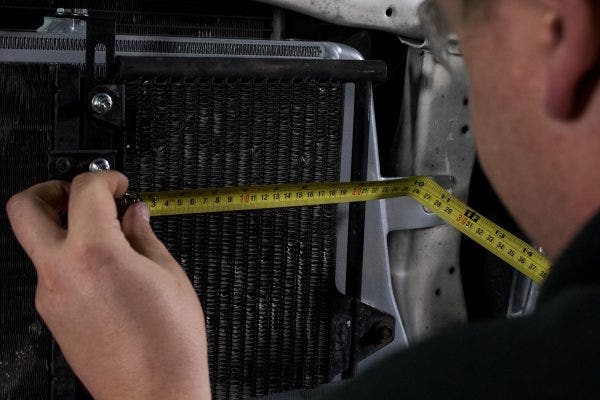
Next Generation Cooling - Transmission Cooler R&D, Part 1: Stock Review
1994 was an eventful year. Nelson Mandella became the president of South Africa, OJ Simpson gave the Ford Bronco some free air-time, and Dodge released the 2nd generation Ram pickup that would define the brand for the next thirteen years.

Breaking the blocky, sedan-like mold poured by their competitors' previous generations, the designers of the second-generation Ram looked to the trucks of the 1950's to design an edition that stood out with just the right amount of bravado. With its rolling fenders and massive front grille, little of the first-generation Ram remained when Dodged revealed the 1994 model. What did remain, however, was the option of getting your workhorse Ram 2500 or 3500 with an equally suited Cummins diesel engine.
With 15 more horsepower and 20 lb-ft more torque than the previous generation Cummins, the new Ram needed a beefier transmission. The TorqueFlite 47RH proudly delivered that power from 1994 to 1995, but as emissions laws became stricter, the Cummins engine became more efficient, and more powerful. By 1996, the Cummins I6 engine had again gained 20 lb-ft more torque, and a 47RE transmission to carry that power. Throughout the rest of the generation, the Cummins B-Series engine grew to become a 24-valve monster, making over 450 lb-ft of torque.

Except for some high-output models offered in 2001 and 2002, the 47RE transmission remained the reliable partner to every automatic, Cummins-powered Ram built from 1995 to 2002. While the 47RE was well built to handle the growing power output of the Cummins engine, it leaned on a less than exceptional companion to help carry the load, the feeble transmission cooler.

The Cummins B-series engine, and its counterpart transmission, evolved throughout the second-generation Ram's life. Many of the supporting features, however, remained the same. Despite a nearly 35% increase in power output from 1994 to 2001, the transmission cooler went unchanged. For most owners up until 2001, this transmission cooler did the job and probably did it quite well. After all, the stock cooler boasts a large surface area mostly occupied by cooling surface. However, tack on 16 to 23 years of abuse from dirt, rocks, and errant wrenches, and that trans cooler has seen better days.

Of course, almost every stock component of any truck or car will have to be replaced eventually, but even well-kept second-gen Rams could benefit from replacing the old transmission cooler. Many of these trucks have seen their fair share of power-adding modifications, and with more power comes more heat. At some point, the stock trans cooler won't be able to keep up. You wouldn't trust 16-year-old tires to keep your truck planted on the road; so why trust your 16-year-old transmission cooler to keep your transmission cool? Soon, you'll be able to replace the aging, underdeveloped transmission cooler in your second-gen 2500 or 3500 with one that's as evolved as the Cummins B-series that drives it.
Thanks for reading,
-Steve




